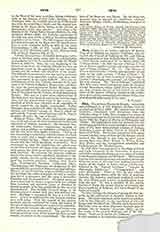

NEVE, titular see of Arabia, suffragan of Bostra. Two of its bishops are known: Petronius, who attended the Council of Ephesus in 431, and Jobius, who was present at that of Chalcedon in 451. Isaac, a third bishop, mentioned by Le Quien about 540 (“Oriens christ.”, II, 864) was not a bishop of Neve but of Nineve, and lived at the end of the seventh century (“Echos d’Orient”, IV, 11). The Diocese of Neve is noticed in the “Notitia episcopatuum” of Antioch in the sixth century (“Echos d’Orient”, X, 145), and the city of Neve is referred to by George of Cyprus (“Descriptio orbis romani”, ed. Gelzer, 54) in the next century. The “Revue biblique” published (III, 625) some Greek inscriptions from the locality. A large Mussulman village called Nawa, in the Hanran, now occupies the site of this former see and the tower of the ancient Christian church is still visible. Neve must not be confounded with Mount Nebo, situated about 94 miles south of the town.
S. VAILHE

